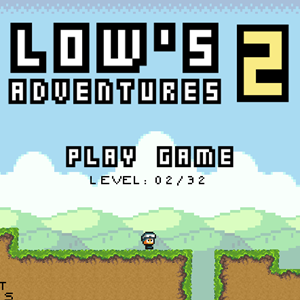The design of children’s literature holds a captivating and enchanting quality. With its intended audience being innocent children, these books wield significant influence over their readers. Children possess a natural innocence, are quick to learn, and harbor vivid imaginations, making them both receptive and demanding readers. Consequently, satisfying their literary appetites can be quite challenging. Children’s books encompass a wide array of categories, including picture books, but crafting and illustrating one is no simple task. Illustrations play a pivotal role in this genre, as they serve as a means for designers to communicate with their young readers through their tiny eyes. For those interested in embarking on the journey of creating and illustrating a children’s book, here are some helpful guidelines to consider.
Main Character’s Illustrations
The allure of children’s books lies in their ability to introduce endearing characters. Throughout various literary works and art forms, charming characters in the forms of humans, animals, and animated objects become captivating focal points for young readers. To create a successful and engaging project, it is essential to illustrate such a likable character who takes on the central role in the story.
1- Kid-Friendly Main Protagonist
Several key factors can aid you in crafting and illustrating the most compelling character for your book. The initial aspect involves a child or child-like protagonist. The concept of portraying a young character is fundamental as it facilitates a relatable connection. However, as an illustrator, your task extends beyond merely creating a youthful figure. Your character should be able to captivate and elicit a response from the reader, be it through attention, energy, or sheer attraction. When you introduce a young protagonist in your book, it enables children to envision themselves in that role, serving as a valuable means to impart knowledge and offer examples of children their age solving problems.
2- Gather Creative Ideas
Crafting a distinctive creation proved to be quite a challenging endeavor. However, in many instances, seeking inspiration can aid in developing a suitable personality for a particular story. When undertaking the illustration of a children’s book, it is crucial to emphasize that your character can embody anything, hailing from any region, country, or even inspired by the children around you. The primary goal in this process is to create a character that feels authentic and relatable, thus resonating with young readers. There is no need to conjure up a genius or fantastical figure solely for the sake of novelty; the key is to ensure the character is enjoyable. Realistic characters enable children to connect and delight in the tale, just as incorporating genuine references for the book’s setting and storyline facilitates easier comprehension.
3- Create Lasting Impressions
Is it sufficient to portray an ordinary child as your main character in a children’s book? Certainly not. To ensure your children’s book character shines and remains memorable, you must infuse them with uniqueness. There are two effective approaches to achieve this: either by giving them a distinctive tangible object or by defining their remarkable traits. For instance, consider Harry Potter, who stands out with his distinctive scar and glasses. To illustrate the main character in a children’s book, you can incorporate endearing little details such as a mismatched sock, a large teddy bear, a ribbon, or curly hair. Moreover, when dealing with non-human characters, you can play around with their attributes or personalities. Take the example of Olaf from the movie Frozen, who possesses a big carrot nose and exudes a fun and vibrant personality.
4- Bringing Traits To Life With Art
One significant mistake to steer clear of is relying on lengthy character descriptions. Instead, aim to illustrate your children’s character with meticulous detail. Convey their traits through actions and dialogue, which proves more effective than extensive narrations in your book. Keep in mind that your audience, children, might not have acquired reading skills yet, so emphasize the importance of communicating everything through your drawings.
5- Profiling Through Practice And Planning
Gaining ideas and inspiration from various children’s books, you must persist in practicing to master the art of character development. If you are a beginner, a good starting point is to experiment with different actions and poses while drawing. The more you draw, the better you can depict every intricate detail, allowing you to showcase the full potential of your story and its characters. Embracing diversity and inclusivity in character creation is crucial, as modern children’s books often delve into universal issues that encompass both fictional and real-life events. This approach opens the door to illustrating characters with a range of traits, skin tones, personalities, strengths, weaknesses, and backgrounds. However, it is essential to avoid bias and ensure a fair representation. To guide you in illustrating the main character of a children’s book, begin by crafting their profile. This will aid in planning and deciding on the character’s relatable aspects while laying the plot and foundation for the storyline. Start by selecting a rhymed children’s name to enhance memorability, for instance, “Nobi Nobita.” Then, jot down all appearance-related points, including age, clothing, physical features, and distinctiveness. Expound on the character’s relationships, such as family and friends, before delving into their traits and personality.
Determining The Ideal Setting For The Plot And Characters
Every book requires a setting that establishes the backdrop for the story and its content. It’s essential to create a world or environment to place your characters within. As an illustrator, you can develop this setting while working on the project or creating the characters. For beginners, it’s not necessary to be overly concerned about intricate details, as young children may not even be familiar with complex worlds yet. Therefore, crafting an appropriate ambiance for your book doesn’t need to be overly challenging. However, this doesn’t mean you should approach it half-heartedly. The setting you design will play a significant role in shaping the story’s tone and style.
1- Establishing Design Consistency And Balance
How does the setting impact the process of illustrating a children’s book? Surprisingly, the setting encompasses numerous elements that demand attention. As an illustrator itself, you cannot simply draw the design without considering the necessary details and information. It’s crucial to ensure that your illustrations perfectly align with the story and create an authentic depiction. In essence, the setting must be relevant and appropriate to the narrative. A key aspect is establishing a consistent tone between the world setting and your children’s book design. For instance, if you depict a character with a simple design and minimal fancy details, the setting should be balanced in the same style. On the other hand, a bright and vibrant color setting can serve as a counterbalance to other elements, such as a highly rendered forest, creating a harmonious contrast with simpler character faces.
2- Setting The Story’s Time And Place
When creating settings for children’s books, it’s essential to emphasize the time and location period. Incorporating such details may require some research. Pay careful attention to elements like clothing, buildings, environment, culture, and other relevant information. A well-crafted setting should subtly present these details, allowing children to learn from the visuals. It’s worth noting that each location has its own unique stories to tell, and the same goes for different time periods, each setting offering distinct characteristics. For instance, a setting in the 1990s will differ from one in the 2020s. Charlotte’s Web and The Little Prince serve as great references to observe this contrast. Both books possess distinct settings, influencing their visual styles as well. Charlotte’s Web revolves around a barn and countryside life, depicting relevant environments such as barns, fields, and livestock. On the other hand, The Little Prince’s setting lies in planets and outer space, allowing for imaginative and creative visual details.
Preparing A Storyboard For Illustration
Enhance your children’s book illustrations by incorporating a storyboard. By this point, you probably have already planned the characters and the book’s setting. The next crucial step is storyboarding, which is key to creating a well-balanced and thoughtful narrative. Just like in movies or videos, your children’s book aims to tell a coherent story from the first to the last page. The storyboard acts as your layout, ensuring that no details are overlooked throughout the project. To create a storyboard, illustrate each page or panel according to your story using thumbnail sketches, which don’t require excessive detail. These thumbnails serve as the layout plan, helping you visualize the unfolding story in your mind and direct the scenes. The flexibility of this stage allows you to experiment with various cinematic views, angles, and cropping, making it easier to refine your ideas in the later stages. This process is not merely about simple drawings; it’s an opportunity for skilled illustrators to showcase their guide and imagination of children through the real story. Utilizing a storyboard eliminates the need to redo detailed work that may not align with the overall vision. As a beginner, focus on creating a storyboard that emphasizes the focal point and essential information, without delving into too many specifics. You can experiment freely, using character sketches, landscape cropping, and blurred foregrounds. Since the storyboard is a behind-the-scenes project, there’s room for exploration. You can even use small, blurry sketches with headings to decide on the layout, ensuring that your illustrations and the story cohesively complement each other. Some professionals from children’s book illustrators for hire even incorporate a cross-page design to add witty surprises and elevate the storytelling experience.
Deliberating On The Illustration Technique And Style
In this scenario, it’s essential to draw inspiration and build a portfolio of children’s book designs. The variety of jobs and ideas you’ve undertaken will aid you in exploring numerous techniques for your picture book. The multitude of styles you can discover is extensive. Children’s books encompass a wide array of visual styles, aiming not only for attractiveness but also for art that resonates with their target age group. A considerable number of illustrators use bright and lively color palettes to emphasize the playfulness and vibrancy of children’s characters. Meanwhile, some prefer traditional hand-drawn styles to infuse a personal and unique touch to their illustrations. With the plethora of illustrator software available, you have the opportunity to experiment with even more illustration styles, such as freehand digital, digital vector, or replicating manual techniques like watercolor, colored pencil, acrylics, ink, pen, and graphite illustration. The options are vast for your children’s literature illustration book projects. Digital tools, including brushes and media, prove highly advantageous in the creative process, especially for beginners who prefer the freedom to make changes easily with undo and redo features. Unlike real-life materials, digital techniques save time on scanning and paint-drying. However, the choice of technique is ultimately in your hands. Choose a style that brings you joy and mastery, but ensure consistency in your illustrations. When illustrating a children’s book, using only one style is recommended to avoid a cluttered or distracting appearance. Simultaneously, ensure that the chosen style complements and accurately represents the story in your children’s book. Vivid colors are a common feature in many illustrations found in children’s books, regardless of the drawing style. Consider incorporating eye-pleasing textures with pastel hues or experimenting with a mix of pencil strokes, watercolor filling, and pastel colors to create an exceptionally attractive book, similar to “Nobody Loves Me” by Liza Tretyakova.
Finalizing The Project With A Captivating Cover
Now that you have everything planned for the book’s contents, it’s time to focus on the cover. Emphasize that the first impression of your children’s book lies in its cover. No matter how fantastic the designs and illustrations are inside, if people don’t feel compelled to buy the book, all your efforts will be in vain. Hence, mastering the art of creating a captivating and attractive cover is essential. So, how can you achieve this? First and foremost, you must illustrate a cover that stands out, one that captures everyone’s attention. It should be attractive enough to catch the eyes of adults (parents) while piquing the curiosity of children, making them eager to buy and discover the story inside. However, attractiveness alone isn’t enough; the cover design should also convey the essence of the story, particularly its mood. To do this effectively, showcase the main character and the central conflict in a simple yet engaging manner. Consistency is key, so use the same illustration style to communicate the book’s contents and showcase your artistic skills. Typography and hand lettering also play a vital role in the cover’s appeal. The cover must display the book’s title and hand lettering strikes a perfect balance between conveying essential information and adding an attractive touch. If you’re proficient in hand lettering, utilize typeface guides, brushes, or styles to craft an appealing and relevant title. However, if hand lettering isn’t your forte, you can still achieve a professional look with the children’s book illustrator for hire and by using appropriate typefaces or fonts. Ensure the typography seamlessly integrates with the overall aesthetic of the cover, and don’t shy away from getting creative to illustrate a children’s book that exudes professionalism and allure by the best children’s book illustrator for hire.
Conclusion
Although illustrating a children’s book through ghostwriting servicesmay seem straightforward, it involves a myriad of intricate details. This is particularly true for books that aim to convey positive messages. Due to the limited cognitive abilities of younger children in processing information. Using appropriate and engaging illustrations becomes crucial to express the intended message effectively. Pictures serve as a means to capture their interest and foster a conducive environment for learning.




More Post
10 Comprehensive Trends You’ll See at a coomer party: Get Ready for Surprises
rap-quotes.com blog archives 10 Powerful Quotes on Dreams and Disappointment
Soyupoya: 10 Inspiring Steps from Frustration to Fulfillment